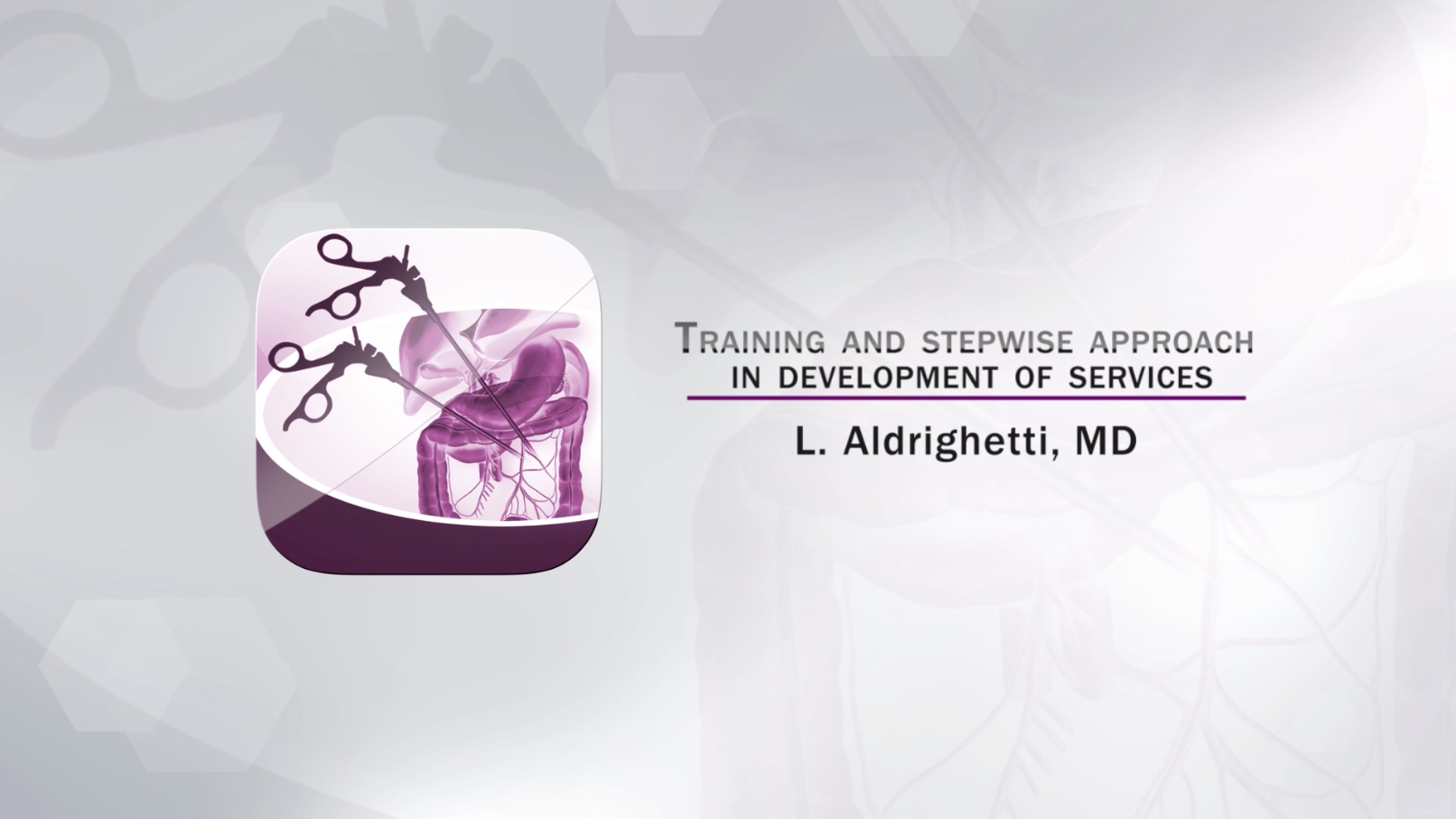Training and stepwise approach in development of services
Luca Aldrighetti
The definition of the standard educational process to be covered by a surgeon during the training period is still lacking in the field of laparoscopic liver surgery, while this need was acknowledged both during the 2nd International Consensus Conference on Laparoscopic Liver Surgery (Morioka, 2014) [1] and during the 1st International Guidelines Meeting on Laparoscopic Liver surgery (Southampton, 2017)..
Learning curve
As patient safety must be persecuted as the primary endpoint of surgery, the learning curve period should not affect perioperative risk and the need for technical improvement should not push the surgeon to compromise the balance between expertise and recruitment to laparoscopy: in this view, a procedure should not be only “attempted”, but instead faced when the technical and technological background is adequate. Hence the need to use difficulty indexes [2,3] in an educational perspective.
Indeed, since centers regularly performing liver surgery carry out liver procedures with a wide range of difficulty [6], a surgeon should know which resections he should perform laparoscopically in each phase of training and how many of them are required to further expand the pool of candidates to laparoscopy.
Impact of technical difficulty
To our knowledge, the definition of the learning curve according to technical difficulty is an innovative concept: the scoring system described by Ban-Wakabayashi [2] and by Kawaguchi-Gayet [3] indeed overcomes the use of minor/major resections as synonyms of easy/complex resections respectively. It is well known indeed that a wedge resection in a posterior segment of a cirrhotic liver can definitively be more challenging compared with a left hepatectomy in a normal liver (and, by the way, laparoscopic left hepatectomy can be considered a standard while resections in postero-superior segments are still far from this concept).
Learning curve in laparoscopic liver resections is a progressive (i.e. expertise is gained along with increasing number of cases) but even a step by step process (i.e. a surgeon should complete his learning curve in low difficulty procedures before facing intermediate and then complex resections).
This perspective acquires a concrete dimension when considering that procedures with different degree of difficulty require even specific instrumentation and skills: indeed, irrespectively of surgical expertise, it is strongly recommended to face a laparoscopic procedure only when both technical and technological conditions are proportional to the level of difficulty of the procedure itself.

It is possible to summarize these requirements as follows:
Step one
Low difficulty (i.e. left lateral sectionectomy and minor procedures in anterior segments). Instruments: ultrasonic dissector, bipolar forceps, laparoscopic ultrasound, energy device. Skills: Know how regarding patient and trocars position, technique for parenchymal dissection, Pringle maneuver.
Step two
Intermediate difficulty (i.e. left hepatectomy, multiple resections in laparoscopic segments). Instruments: atraumatic retractors, instruments for hilar dissection. Skills: right liver full mobilization, vena cava exposure, approach to major pedicles, expertise in liver ultrasound guidance for liver resections.
Step three
High difficulty (i.e. Right hepatectomy/extended hemihepatectomies, resection of posterosuperior segments, ALPPS procedures, advanced cirrhotic patients, living donor). Instruments: laparoscopic liver surgery operating room with advanced vision systems, integrated imaging systems, pre-defined sets of instruments for different type of resections. Skills: approach to hepatocaval confluence, laparoscopic hanging maneuver, laparoscopic lymphadenectomy, vascular sutures and biliary reconstructions.
Among tools to implement the diffusion of laparoscopic liver programs, events of training and surgical proctoring are advisable. Even if, to our knowledge, scientific data regarding the effect of these initiatives are still lacking, we can speculate that, for beginners, operating under the technical supervision of a master surgeon and after the acquisition of a theory background should be the standard practice to obtain safe and cost-effective procedures.